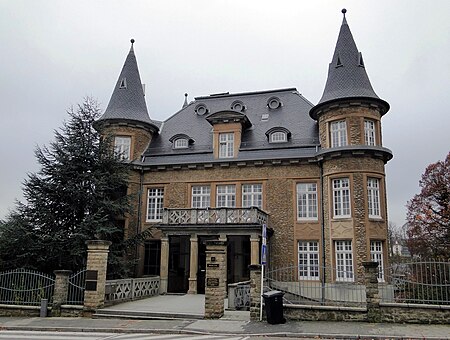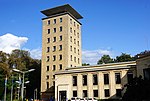Villa Pauly
1923 establishments in LuxembourgBuildings and structures in Luxembourg CityHistory of Luxembourg City

The Villa Pauly was built in 1923 at No. 57, Boulevard de la Pétrusse, in the center of Luxembourg, for the surgeon Dr. Norbert Pauly; the architect was Mathias Martin. With its corner towers, the house mimics the castle architecture of the Late Middle Ages and the Renaissance. Initially Dr Pauly housed his practice in the basement of the building.
Excerpt from the Wikipedia article Villa Pauly (License: CC BY-SA 3.0, Authors, Images).Villa Pauly
Boulevard de la Pétrusse, Luxembourg Gare
Geographical coordinates (GPS) Address External links Nearby Places Show on map
Geographical coordinates (GPS)
| Latitude | Longitude |
|---|---|
| N 49.6061 ° | E 6.125 ° |
Address
Villa Pauly
Boulevard de la Pétrusse 57
2320 Luxembourg, Gare
Luxembourg
Open on Google Maps








